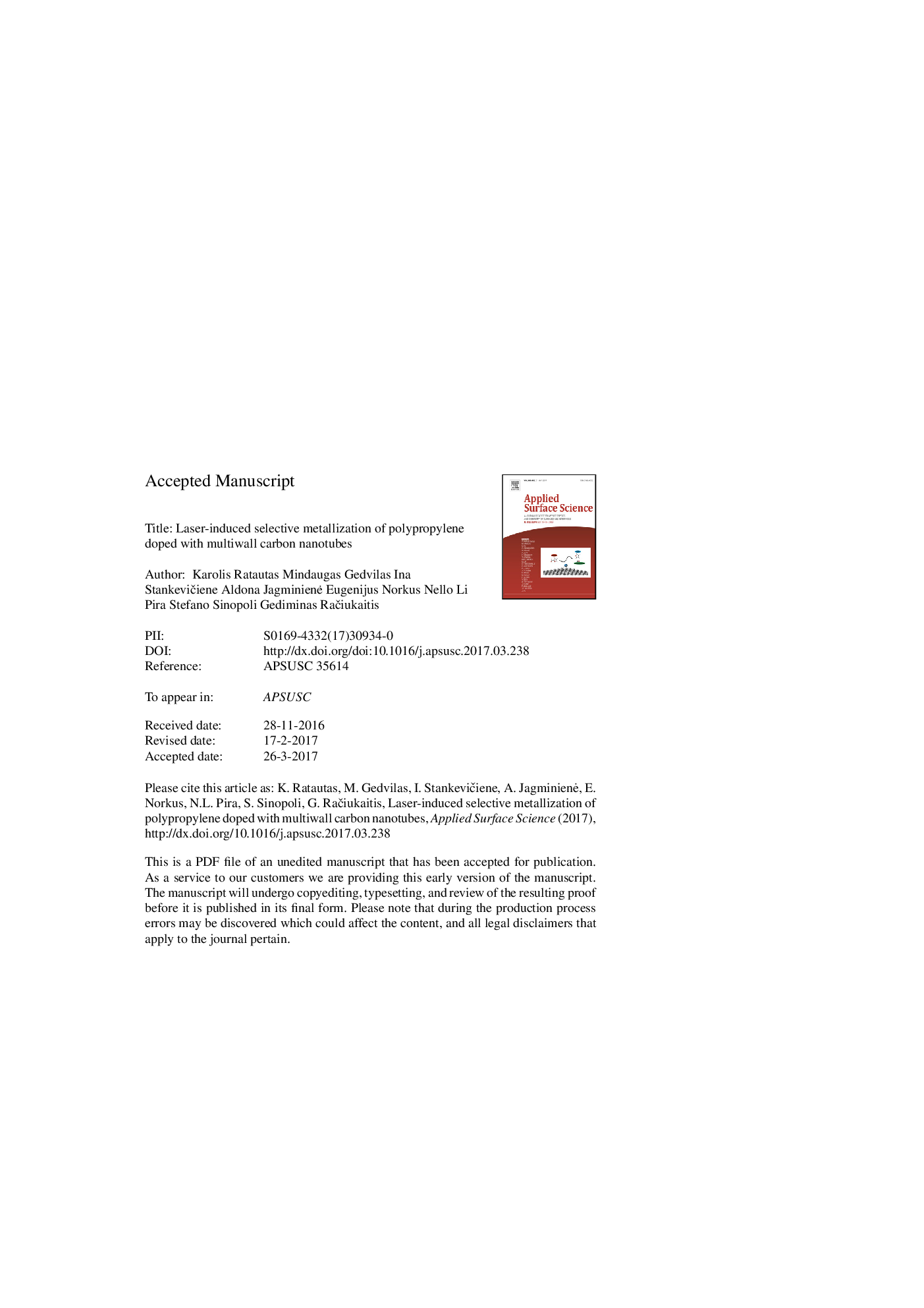| Article ID | Journal | Published Year | Pages | File Type |
|---|---|---|---|---|
| 5347038 | Applied Surface Science | 2017 | 25 Pages |
Abstract
Moulded interconnect devices (MID) offer the material, weight and cost saving by integration electronic circuits directly into polymeric components used in automotive and other consumer products. Lasers are used to write circuits directly by modifying the surface of polymers followed by an electroless metal plating. A new composite material - the polypropylene doped with multiwall carbon nanotubes was developed for the laser-induced selective metallization. Mechanism of surface activation by laser irradiation was investigated in details utilising pico- and nanoseconds lasers. Deposition of copper was performed in the autocatalytic electroless plating bath. The laser-activated polymer surfaces have been studied using the Raman spectroscopy and scanning electron microscope (SEM). Microscopic images revealed that surface becomes active only after its melting by a laser. Alterations in the Raman spectra of the D and G bands indicated the clustering of carbon additives in the composite material. Optimal laser parameters for the surface activation were found by measuring a sheet resistance of the finally metal-plated samples. A spatially selective copper plating was achieved with the smallest conductor line width of 22 μm at the laser scanning speed of 3 m/s and the pulse repetition rate of 100 kHz. Finally, the technique was validated by making functional electronic circuits by this MID approach.
Related Topics
Physical Sciences and Engineering
Chemistry
Physical and Theoretical Chemistry
Authors
Karolis Ratautas, Mindaugas Gedvilas, Ina StankeviÄiene, Aldona JagminienÄ, Eugenijus Norkus, Nello Li Pira, Stefano Sinopoli, Gediminas RaÄiukaitis,
